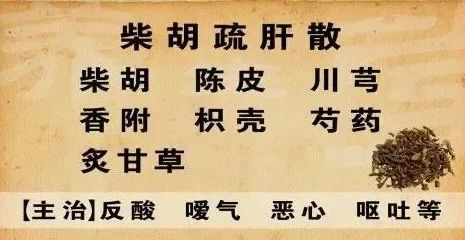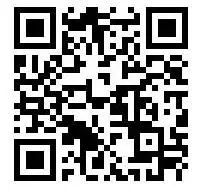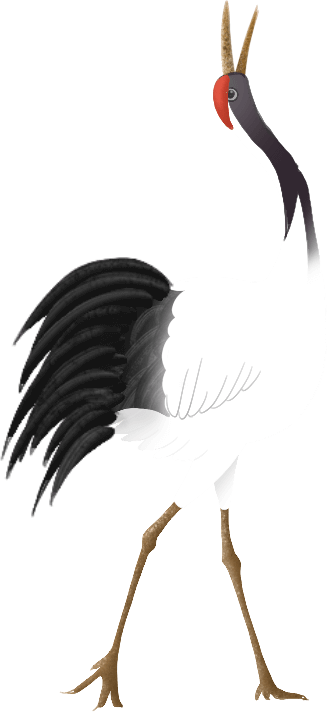Have you ever experienced such feelings?
There was a time when I often felt chest tightness and shortness of breath. Even a little walking would leave me gasping for air, and I felt weak when speaking. When I got anxious or talked for too long, I would easily become breathless;
Sometimes, my mood would inexplicably drop, and I couldn’t muster interest in anything. It was hard to concentrate, and my memory seemed to decline; in lively situations, I found it difficult to integrate and felt somewhat irritable and depressed.
Nowadays, people face various information daily, with increasing tasks and pressure, making it easy to develop anxiety and depression.
In Traditional Chinese Medicine (TCM), “the liver governs emotions.” The symptoms mentioned above are mostly due to liver qi stagnation, where the liver qi is not flowing smoothly, leading to various discomforts.
To thoroughly resolve these issues, one must soothe the liver and regulate qi. When the qi flows smoothly, the mood improves, and physical ailments disappear.
Here, I would like to introduce a famous formula by Zhang Jingyue for soothing the liver, regulating qi, and relieving depression: Chai Hu Shu Gan San (Bupleurum Powder to Spread the Liver).
 Chai Hu Shu Gan San
Chai Hu Shu Gan San

Ingredients: Chai Hu (Bupleurum) 9g, Chen Pi (Dried Tangerine Peel) 9g, Chuan Xiong (Szechuan Lovage) 6g, Zhi Ke (Bitter Orange) 6g, Shao Yao (Peony) 6g, Xiang Fu (Cyperus) 6g, Zhi Gan Cao (Honey-Fried Licorice) 3g. (This dosage is for reference only; specific adjustments should be made under the guidance of a TCM practitioner!)
Administration: Wash the herbs and decoct them in water, taking three doses daily on an empty stomach.
Effects: This formula primarily soothes the liver and relieves depression, treating pain in the hypochondriac region due to liver qi stagnation, unintentional sighing, and over time, may lead to emotional depression, insomnia with vivid dreams, poor memory, and a tendency to be quiet and lethargic.
It can also be used to treat symptoms of cold and fever, alternating chills and fever, feeling cold and shivering at times, and then feeling hot, with bitter mouth and red tongue, indicative of Shao Yang syndrome.
Formula Analysis
This formula consists of seven medicinal ingredients. Chai Hu enters the liver and gallbladder meridians, adept at regulating liver qi and relieving depression. Since qi stagnation can easily transform into heat, Chai Hu also drains liver fire, making it a primary and essential herb for soothing the liver and relieving depression.
As the saying goes, “One tree needs three stakes; one hero needs three helpers.” Relying solely on one person is far from enough.
Thus, we have added supporting herbs to assist Chai Hu: Xiang Fu (Cyperus) to soothe the liver and regulate qi, primarily unblocking the qi in the liver; Chen Pi (Dried Tangerine Peel) to strengthen the spleen and regulate qi, primarily unblocking the qi of the spleen and stomach; along with Zhi Ke (Bitter Orange) entering the spleen meridian, regulating qi and relieving fullness, facilitating the transformation of the essence of grains into qi and blood. Chuan Xiong (Szechuan Lovage) enters the liver meridian, promoting qi and invigorating blood circulation, enhancing the flow of qi and blood.
In this formula, while unblocking liver qi, Chen Pi and Zhi Ke also focus on regulating the qi and blood of the spleen and stomach, ensuring that the liver qi is more abundant and smooth.
Additionally, Shao Yao (Peony) is used to nourish blood and restrain yin, calming liver yang, allowing qi to flow without causing dryness and heat, much like a wise minister beside the ruler, rational and calm, preventing the ruler and other ministers from being overly impulsive.
Finally, Zhi Gan Cao (Honey-Fried Licorice) is used to harmonize the various herbs. The seven herbs work together, each performing its role while cooperating with one another, primarily focusing on soothing the liver, with spleen strengthening as a secondary action, regulating qi and nourishing blood, collectively achieving the goal of unblocking liver qi.
▋Contraindications
1. Zhi Ke has a strong effect on breaking qi, so it is not suitable for individuals with weak spleen and stomach, pregnant women, or during menstruation;
2. Those allergic to the above herbs, elderly individuals, children, and those with chronic diseases or other adverse symptoms should use caution;
3. During medication, one should pay attention to a light diet.
▋Chai Hu
Chai Hu can align with the liver’s characteristics, venting the stagnated qi of the liver, thus serving both to soothe the liver and harmonize the spleen. Overall, it is particularly effective for patients with liver qi stagnation.Additionally, besides soothing the liver and relieving depression, Chai Hu can also alleviate symptoms of blood deficiency, as recorded in “Zheng Yin Mai Zhi” with the “Blood Deficiency Chai Hu Decoction” and in “Xue Zheng Lun” with the “Chai Hu Qing Gu San,” both of which have therapeutic effects on blood deficiency. In both famous formulas, the main herb is also Chai Hu. Here, the blood deficiency mentioned is not due to anemia but rather due to yin deficiency and internal heat causing blood deficiency and excess heat. This is directly related to liver qi stagnation. The liver is the organ that stores blood and prefers smooth flow. If emotional stagnation occurs, the liver loses its smooth flow, and if not adjusted in time, it will accumulate heat, leading to the internal consumption of yin blood, resulting in blood deficiency. When Chai Hu soothes the liver and relieves depression, the issue of liver qi stagnation is resolved, and the internal liver heat is cleared, naturally alleviating the blood deficiency.
▋Xiang Fu
Xiang Fu (Cyperus) is the dried rhizome of the plant from the Cyperaceae family, with a pungent flavor and neutral nature, entering the liver, spleen, and San Jiao meridians. It is a commonly used herb for soothing the liver and regulating qi.
Li Shizhen referred to it as “the commander of qi diseases and the chief of women’s issues.” It primarily soothes liver qi and relieves depression. It has good therapeutic effects for pain in the hypochondriac region and for women’s menstrual irregularities and amenorrhea.
At the same time, Xiang Fu also enters the spleen meridian, thus it can also relieve fullness and regulate qi, treating symptoms such as abdominal distension caused by spleen and stomach qi stagnation.
 What to do about liver qi stagnation?
What to do about liver qi stagnation?
Due to their unique circumstances, social status, and physiological structure, women are more prone to liver qi stagnation compared to men.
1. The direct manifestation of “liver qi stagnation” is a low mood, sighing all day, feeling melancholic, and being particularly sensitive. At the same time, individuals with unrelieved liver qi often feel irritable and easily angered.
2. Liver qi stagnation can also hinder appetite, leading to slow metabolism, fatigue, laziness, and potentially causing obesity and constipation.
3. The regularity of a woman’s menstrual cycle is closely related to the liver’s ability to disperse qi. Liver qi stagnation can lead to shortened menstrual periods, reduced menstrual flow, intermenstrual bleeding, dizziness during menstruation, and insomnia during menstruation.
4. Liver qi stagnation can cause insomnia, characterized by difficulty falling asleep, and even if one does fall asleep, they often have vivid dreams and are easily startled. This affects sleep quality, leading to poor qi and blood nourishment, rough skin, and a dull complexion. Insomnia due to liver qi transforming into fire is often caused by anger harming the liver.
5. The oppression and anxiety caused by liver qi stagnation often lead to symptoms such as headaches, irritability, emotional fluctuations, anger, chest and hypochondriac distension, abdominal fullness, and endocrine disorders.
The above can help everyone determine if they have liver qi stagnation. You can also check your tongue; individuals with liver qi stagnation usually have a pointed tongue with a red tip and edges.
If you cannot determine on your own, it is best to consult a professional doctor.
Methods to Regulate Qi
Pressing to Regulate Liver Qi
Zu San Li (Stomach 36)
Zu San Li is a commonly mentioned acupoint. Massaging or moxibusting Zu San Li can help regulate the spleen and stomach, tonify the liver and qi, unblock meridians, and dispel wind and dampness. If you have symptoms of liver qi stagnation, stimulating Zu San Li can help improve the condition.
Danzhong (Ren 17)
Danzhong is located between the two breasts and has a calming effect on the mind and relieves oppression. When massaging, use the pad of the thumb to apply slight pressure on the acupoint for 5 seconds, then rest for 3 seconds. When angry, stroking downwards 100 times can help smooth the qi and is beneficial for relieving qi stagnation.
Tai Chong (Liv 3)
Tai Chong is known as the most important acupoint in the human body, often referred to in TCM as the “vent for the body.” Tai Chong is the key point for dispersing stagnant liver qi.
 That concludes today’s sharing. Have you learned everything?
That concludes today’s sharing. Have you learned everything?





Scan to contact me
If you have the above symptoms,
or have incomprehensible test reports,
you can scan the QR code above to fill
in your questions and enter the appointment consultation page.


